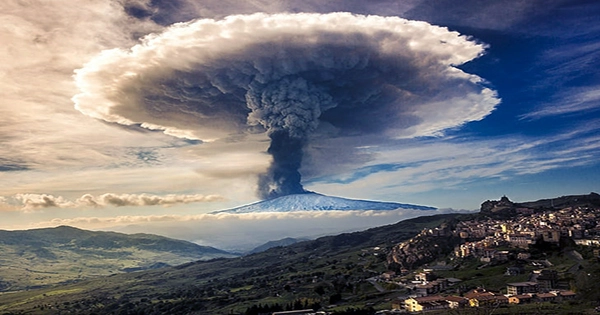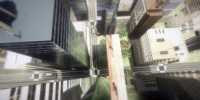Mushroom clouds are commonly linked with nuclear explosions in the public’s consciousness. It might surprise you to learn that images of mushroom clouds have existed since the 1700s. In 1955, the name “mushroom cloud” was coined to describe the form of clouds that rise up following an explosion. There are previous stories of mushroom-shaped clouds, including one after an attack on an Italian ship that was described as “a big mushroom of smoke, blowing slowly up about two or three thousand feet [600-900 meters].”
One may be seen in a picture depicting the 1782 Franco-Spanish invasion of Gibraltar, while another was painted in 1798 of the sky over Gotha, Germany, and was most likely a meteorological event because there was no antecedent explosion. Before you go concocting a conspiracy that the Franco-Spanish army possessed nuclear weapons in the 18th century, keep in mind that a mushroom-like cloud may emerge in a variety of ways. When a highly hot column of gas — most commonly from an explosion, but not necessarily – shoots up very fast into the sky, clouds form. The gases begin to spin in on themselves as it cools, forming the mushroom shape. Nuclear mushroom clouds operate on a similar premise.
The bottom section of the explosion, if it is low enough, attracts dust, debris, and smoke from below, forming the stem of the mushroom clouds that were frequent in World War II before the nuclear bombs were dropped on Hiroshima and Nagasaki. muscheron, musseroun (attested 1327 as a surname, John Mussheron), from Anglo-French musherun, Old French meisseron (11c., Modern French mousseron), possibly from Late Latin mussirionem (nominative mussirio), though this could just as well be borrowed from French, from Anglo-French musherun, Old French meisseron (11c., Modern French mousseron), perhaps.
“Of unknown provenance,” Barnhart adds. It’s “a pre-Latin term used in the north of France,” according to Klein. The OED says it’s typically thought to be a derivation of French mousse “moss” (from Germanic), and Weekley agrees, stating it’s “properly given to variety that grows in moss,” while Klein thinks they’re “completely unrelated.” Weekley refers to grogram, vellum, and venom with the ending -m.
The modern spelling dates back to the 1560s. Since the 1590s, it has been used figuratively to describe anything or someone that appears suddenly in full form, notably an upstart person or family, or someone who climbs quickly from a poor position in life. It dates back to 1916 in relation to the form of clouds that rise upward and outward following explosions, etc., while the word mushroom cloud does not occur until 1955.
Yep, These Are Genuine Paintings of Mushroom Clouds from The 1700s














